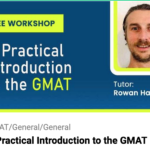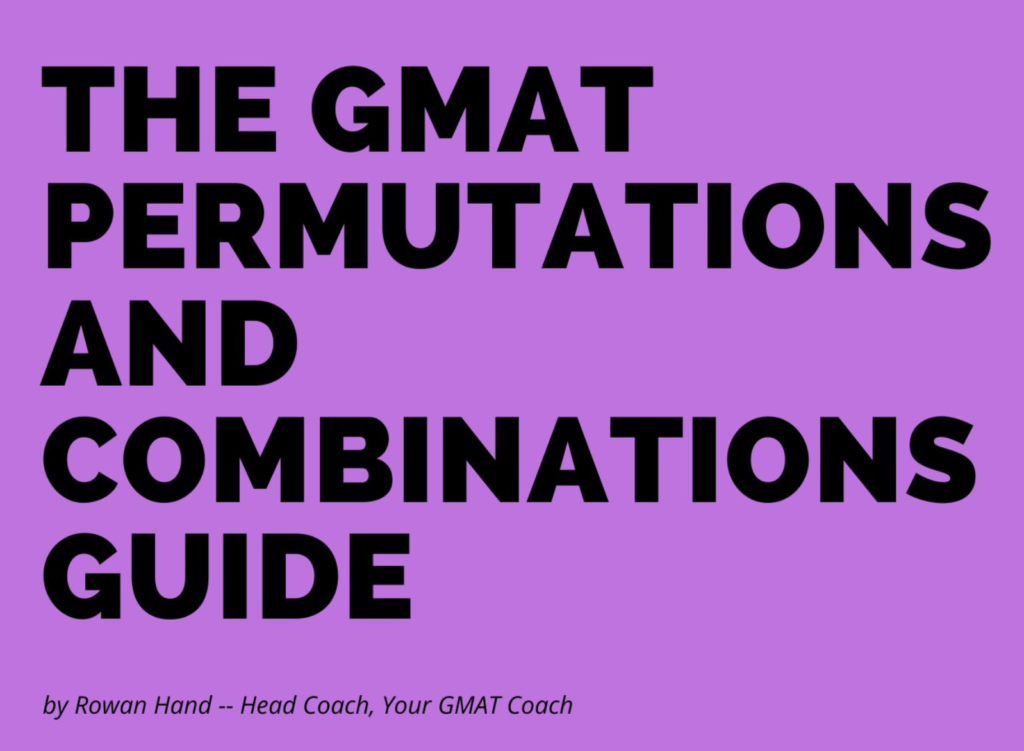Advanced GMAT Sentence Correction Secrets
IS IT WRITTEN ON THE PAGE?
Much of the work of GMAT Sentence Correction or (GMAT Verbal in general) is simply learning to take the statements at absolute face value.
Think about how the most pedantic, literal person you know would interpret these sentences.
Then turn yourself into the most pedantic, literal person you know. You are Egon from Ghostbusters.
You collect molds, spores, and fungus.
Seriously, though. You need to be constantly questioning what is written. Take every statement at face value, and don’t “figure it out.”
In fact, think about what isn’t working.
A lot of people say that GMAT Verbal is about choosing the “least worst” answer.
There’s a certain amount of truth in this, although I don’t necessarily subscribe wholly to the statement.
There are definitely objective techniques to help lead you to the correct answer for SC, CR, and RC. The problem is that because the GMAT is a multiple-choice exam, the correct answers are obscured as much as possible.
This is a necessity, of course, because if the correct answer were clear from the question stem there would be no test.
Rather, GMAT Verbal–and very much GMAT Sentence Correction–is designed such that the incorrect answers must look as appealing as possible.
They need to seem as if they are reasonable answers!
Now of course this is done in a somewhat different way for each section.
GMAT Sentence Correction’s Bad Answers
Most of the incorrect answers in the Sentence Correction section are simply verb correspondence errors (e.g., singular when it should be plural), incorrectly attributed pronouns (e.g., “their” when it should be “his”), and other obvious problems.
They’re the sort of errors that you would most certainly not make when you’re writing.
However, the GMAT expects that–because you’re reading the sentences too quickly—your brain will elide some of this information and you simply “won’t see” the error.
If you think that’s crazy, just think about looking for that one particular DVD out of your entire collection. When you finally ask your friend to help you find it, you realize it was two inches from your nose all along.
The problem is a bit like that—if you’re scanning too quickly and not picking apart structure, these large-scale errors can slip by.
They are not, however, the majority of the problem after a certain point.
After all, once you realize that these totally objective errors exist, they’re fairly easy to identify—IF YOU READ CAREFULLY.
Rather, I’ll focus on a different type of thinking. These are more “style issues” than “grammar issues.”
This includes, but is not limited to:
—parallelism: e.g., “He accused her of being late, smelly, and wagging her tail.”
Technically, since “late” and “smelly” are both adjectives, we’d have to change this to “He accused her of being late, smelly, and tail-wagging.”
(Or is it wag-tailing?)
See? That’s parallelism.
—nominalization: e.g., “She has an objection to his smell.”
If there’s a verb that means the same thing as a noun, use the damn verb.
That is, “She objects to his smell.” And seriously, dude–lay off the Paco Rabanne.
–“idiom”: e.g., “He is capable to smell nice.”
(Let’s not argue about the technical definition of “idiom.” In GMAT Sentence Correction-land, most of the time it’s what is called a “phrasal verb” elsewhere. While phrasal verbs are idiomatic, they are not idioms, per se. However, this is pointless and I’m going to shut up now.)
The correct idiom in this case would be, “He is capable of smelling nice.”
Why? Because that’s what the GMAT expects—go through the Official Guide and write down all of the verbs with their associated prepositions.
Write down the ones you don’t know. Memorize them. You’ll thank me later.
–pronoun-stuffing: e.g., “Malarkey is one of the established rules, which was a claim made in 1943 and it is now widely accepted.”
Geez, here the “which” and the “it” are both inappropriate pronouns. It doesn’t seem so bad, because we know that “it” refers to the law.
However, you could write the same thing much more cleanly this way:
“Malarkey is one of the established rules, a claim made in 1943 and now widely accepted.”
See? By using a modifier tacked on to the end of the sentence, we can make the pronoun issue disappear.
Sometimes it’s not possible to eliminate the pronoun—so that’s clearly not the problem in that question, yes?
The general rule here is this: if it’s at all possible to eliminate the pronoun, do so!
–abstract vs. concrete: “He compared his apple to her running.”
Wha-huh?
Yeah, that’s the point.
That might be an extreme example, but let’s look at another one:
“Unlike the houses in the valley, the arrangement of houses on the hill was scattered.”
Here’s the thing to think about with the abstract vs. concrete distinction: will it fit in a box?
Concrete things have a physical manifestation. They can fit in boxes.
Abstract things exist only in the mind. They are not physical. They do not fit in boxes.
So what we’re seeing in this situation that we’re comparing the valley houses themselves (concrete) to the arrangement of hill houses (abstract).
The correct version would read: “Unlike the houses in the valley, the houses on the hill were scattered.”
–scientific tense: “People who have no olfactory sense, and who thus never smelled a rose, are missing out.”
Scientific statements—except those regarding historical events—will always be in the Present or Composed Past (that is, Past that stretches to the Present). In either case, we address the statement at the present moment.
The correct answer would read: “People who have no olfactory sense, and who thus have never smelled a rose, are missing out.”
Note that the only difference here is to add the “have,” which gives us composed past. That means that the “have smelled” stretches to the present moment.
–nouns as adjectives: “The number of women cyclists has risen.”
“Women cyclists?” Doesn’t it just sound wrong for some reason? Of course it does, because there is an actual reason: “women” is a noun, not an adjective.
The correct sentence would read: “The number of female cyclists has risen.” You know, because “female” is actually an adjective.
Now, these are pretty hard-and-fast rules. There are many, many more rules that are what I’d call 98% Rules. These are ones where one rule holds true–wait for it–98% of the time. Then the other 2% of the time, you’ll have to violate the rule to get the right answer.
That doesn’t sit well with the rigid-minded, but that’s why they get crap GMAT scores. We’ll address this phenomenon very soon.





